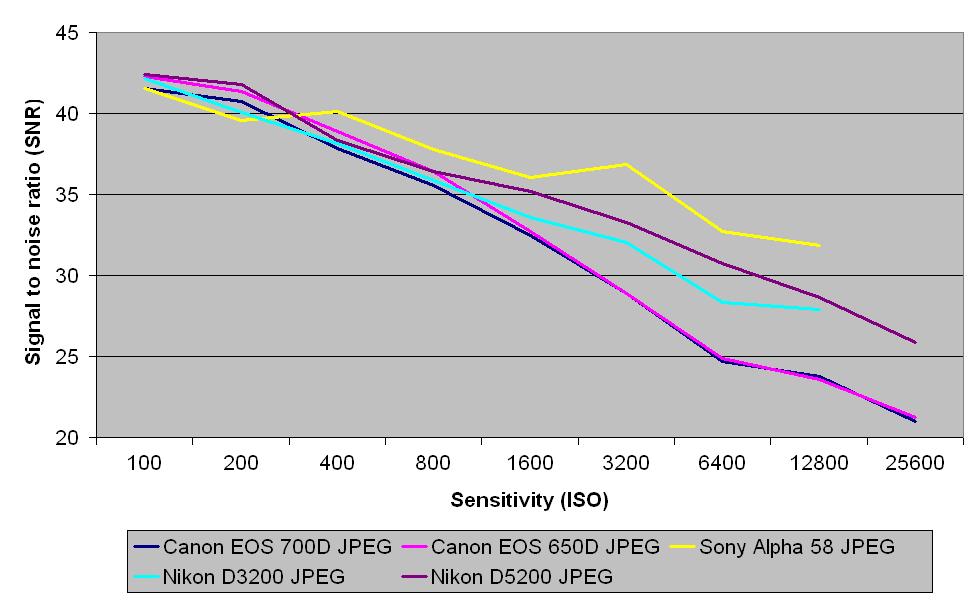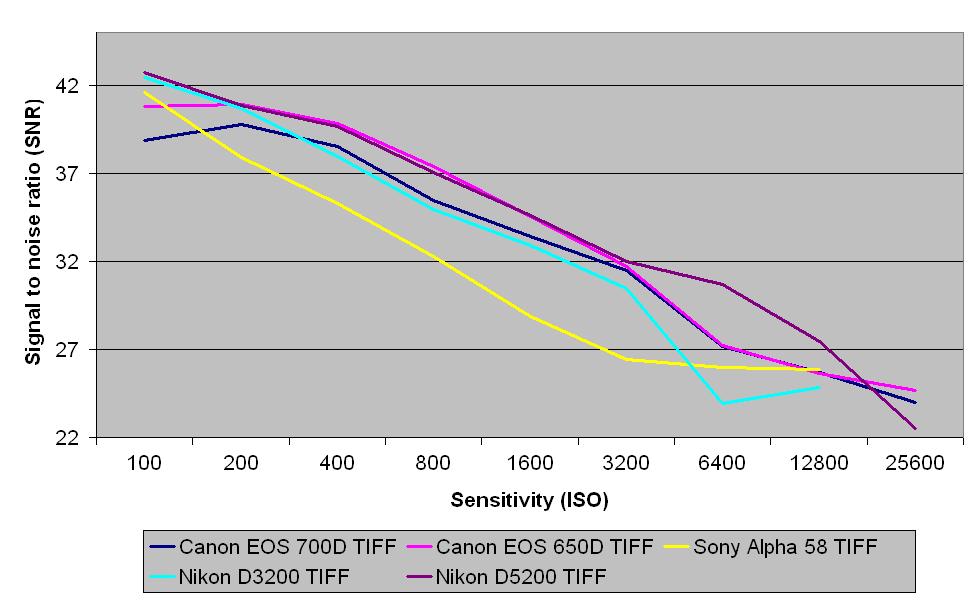Why you can trust TechRadar
We shoot a specially designed chart in carefully controlled conditions and the resulting images are analysed using DXO Analyzer software to generate the data to produce the graphs below.
A high signal to noise ratio (SNR) indicates a cleaner and better quality image.
For more more details on how to interpret our test data, check out our full explanation of our noise and dynamic range tests.
Here we compare the Canon EOS 700D with the Nikon D3200, Canon EOS 650D, Nikon D5200 and Sony Alpha 58.
JPEG signal to noise ratio

At the lower sensitivity settings the Canon 700D has a slightly lower signal to noise ratio (SNR) than the 650D it replaces indicating that it produces JPEGs with a little more noise. This is probably to reveal a little more detail. Beyond ISO 1600 the 700D's SNR is a very close match for the 650D's and both are beaten by the Nikon D3200, Nikon D5200 and Sony Alpha 58.
Raw signal to noise ratio

As with the JPEG files, after conversion to TIFF the raw files from the Canon 700D have a lower SNR than the Canon 650D's files up to around ISO 3200. With the exception of the lower sensitivity settings, the 700D beats the Sony Alpha 58, but it a fairly close match for the Nikon D3200 and Nikon D5200.
JPEG dynamic range

While it doesn't match the Sony Alpha 58, Nikon D5200 or Nikon D3200 for JPEG dynamic range it seems likely that Canon has done this deliberately to produce higher contrast images that look print-ready.
Sign up for breaking news, reviews, opinion, top tech deals, and more.
Raw dynamic range

The 700D's raw file (after conversion to TIFF) dynamic range is a very close match for the Canon 650D's - hardly surprising given that they have the same sensor and processing engine. The highest dynamic range is achieved at ISO 200 and ISO 400 (from where it more-or-less matches those of the Nikon D3200 and Sony Alpha 58). The Nikon D5200's raw files (after conversion to TIFF) have the widest dynamic range at any sensitivity setting indicating that it can capture the widest range of tones ina single shot.
Current page: Noise and dynamic range
Prev Page Image quality and resolution Next Page Sample images